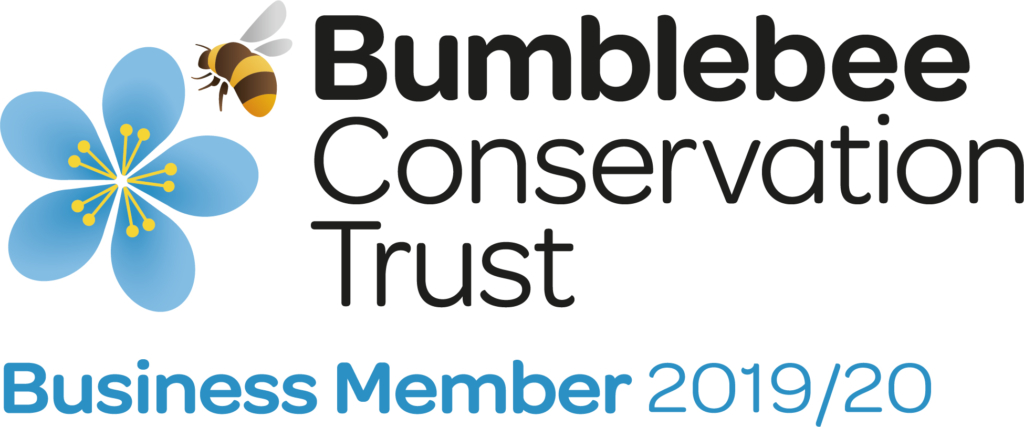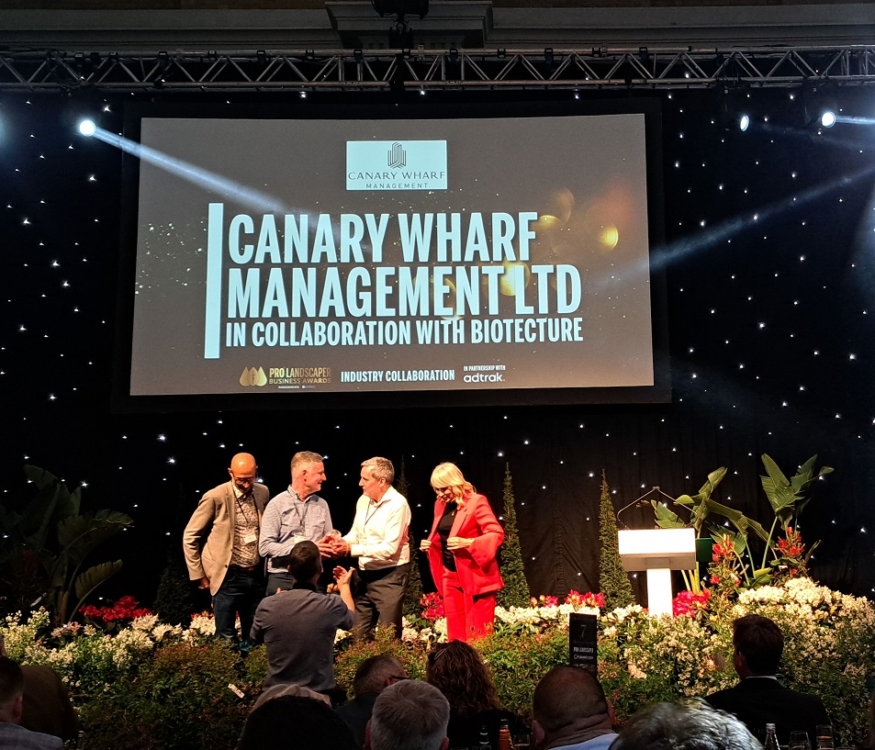Proven to aid biodiversity, our living walls provide fantastic foraging opportunities for bumblebees and we always enjoy seeing them drinking nectar from our bee-friendly flowering plants. However, while our green walls are helping to provide bumblebees with food in urban areas, the UK countryside has lost 97% of its wildflowers since the 1930s, leaving bumblebees with little to feed on and dramatically reducing their populations.
Bumblebees are excellent pollinators due to their larger bodies and ability to pollinate more flower types than domesticated honeybees. This is why the UK economy relies on bumblebees to pollinate our crops, fruits and plants, so it’s vital that their population thrives. That is why Biotecture has become a BusinessPlus Member of the Bumblebee Conservation Trust, supporting the wonderful work it does to improve conditions for our nation’s wild bumblebees.
The Trust also supports the conservation of the 250+ wild solitary bee species we have in the UK. Biotecture incorporates solitary bee hotels, made of dead wood and bamboo, in our living walls to provide essential nesting habitat for red mason bees, leafcutter bees, wool carder bees and many more.
The Bumblebee Conservation Trust has four main goals:
- To enhance the understanding of bumblebee ecology and conservation – and educating people on bee-friendly gardening techniques
- To increase the quality and quantity of bumblebee habitat – planting wildflower meadows and surveying habitats to find out where bumblebees are
- To inspire and enable a diverse range of people to take action for bumblebees – talking to school students, farmers, local authorities, parents and children
- To be an effective and sustainable organisation
We’re looking forward to working with the Trust throughout the year. If you or your business is interested in getting involved, do reach out to them; they’re always keen for support.

And before you go, here are some bumblebee facts from the BBCT that you may be interested to learn:
- We have 24 species of bumblebee in the UK – but only seven species are now considered common.
- The non-native Tree bumblebee, which does not appear to compete with our native bumblebees, is a very effective pollinator and is the only species that nests high above the ground in trees, bird boxes and sometimes in roofs! All other bumblebees nest and hibernate underground in soil or in long grass.
- Different bumblebee species have adapted to feeding on different flower sizes depending on the length of their tongue. Some bumblebees have very short tongues, e.g. the buff-tailed bumblebee, so they need accessible, flat-shaped flowers, while some bumbles e.g. the garden bumblebee, can reach the nectar deep inside a foxglove or other tubular flowers.
- Bumblebees emerge from hibernation early in the spring and some species do not hibernate until late October. They therefore need a constant supply of nectar throughout that time, so lavender and other typical summer flowers aren’t enough. Some bumblebees are active all year round now, due to warmer winters.





